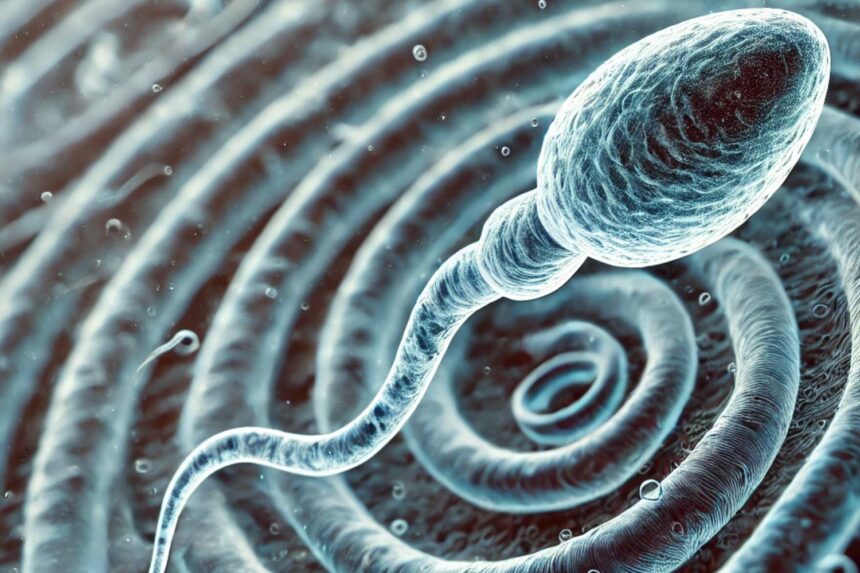When we learn about “the birds and the bees,” we’re taught that after heterosexual intercourse, sperm swim up through the vagina, past the uterus, and into the fallopian tube, where one fertilizes an egg released by the ovaries. It turns out, however, that sperm aren’t just leisurely swimming—they’re racing through the female reproductive tract, propelled by swirling fluid vortices shaped like rolling corkscrews.
Researchers from Monash University and the University of Melbourne used advanced imaging to analyze the 3D fluid motion around swimming sperm. As detailed in a study published Tuesday in the journal Cell Reports Physical Science, the imaging revealed that a single swimming sperm creates multiple swirling vortices that attach to the cell and rotate around each other in sync, boosting the sperm’s propulsion. This discovery sheds light on how corkscrew flow patterns influence sperm locomotion and could have direct relevance for reproductive science.
“As the sperm swims, its flagellum (tail) generates a whipping motion that creates swirling fluid currents that could optimise their propulsion in the reproductive tract,” Reza Nosrati, co-author of the study and lecturer in the Department of Mechanical and Aerospace Engineering at Monash University, said in a university statement. “What’s really fascinating is how these spiral-like ‘imprints’ in the surrounding fluid attach to the sperm body and rotate in sync, adding extra thrust.”
If you’re having a hard time visualizing this exceptional propulsion method, it’s a bit like two swirling columns twisting around each other. Or “imagine taking a straight rubber band and twisting it into a spiral. Now, add another turn to create a superhelix—a tightly coiled, extra-twisted structure,” Nosrati explained. “For sperm, this extra twist in the fluid enhances their movement, following them as it tightens, allowing them to swim more efficiently.”
Nosrati and his colleagues claim to be the first to have simultaneously imaged both the sperm tail movement and its 3D flow field. Because this propulsion method may influence how sperm interact with their surroundings, it could have important implications for fertility research. More broadly, capturing the movement of “tiny swimmers” could also be relevant to understanding how other tiny swimmers, such as bacteria, move and interact with their environments, according to the researchers.
“These visualisations help us to better understand the fluid dynamics and the way sperm and other microorganisms navigate through different fluids,” Nosrati explained.
Turns out that making babies really is about having the right moves—all the way down to the sperm’s choreography.
Read the full article here










